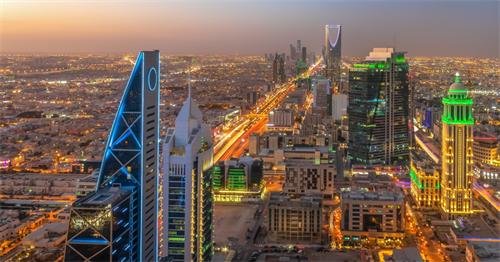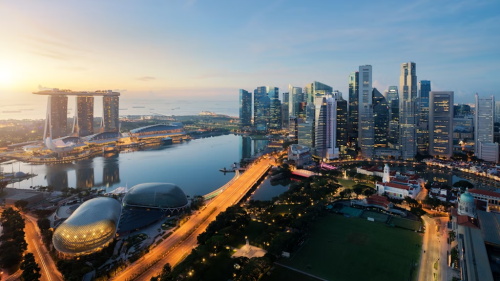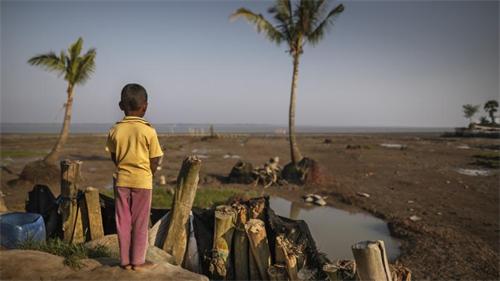Beyond Oil: How Far Has Saudi Arabia Come on Its Vision 2030 Journey?

There are now only five years left until Saudi Arabia’s Vision 2030 officially reaches its target date. Launched in 2016 by Crown Prince Mohammed bin Salman, this ambitious national reform blueprint carries the grand ambition of helping the Kingdom break free from its long-standing "oil addiction." Today, this transformational journey has already yielded remarkable progress—according to the latest official report, 93% of the initiative's Key Performance Indicators (KPIs) have been fully or partially achieved, with many even surpassing expectations. Yet behind these glossy numbers lies a more complex reality of structural dependencies, development paths, and the very model of transformation itself.
From Oil Giant to Diversification Dreamer
For decades, oil has been the backbone of the Saudi economy. Between 2009 and 2014, oil revenues accounted for more than 85% of government income, generating massive financial surpluses and supporting social stability. However, this heavy dependence also left the Kingdom highly vulnerable to global oil price fluctuations. In late 2014, crude prices crashed nearly 50% within a year, slashing Saudi Arabia’s fiscal revenue from $280 billion to $162 billion. The economy suffered a severe blow, the budget deficit ballooned, and the country’s credit rating was downgraded by Standard & Poor’s from A+ to A-.
This oil crisis served as the final wake-up call. In 2016, the Saudi government unveiled Vision 2030—a strategy aimed at diversifying the economy, improving quality of life, empowering the private sector, and enhancing international competitiveness. It marked the Kingdom’s official departure from an oil-centric economic model.
Impressive Progress and Widespread Reform
Eight years in, Saudi Arabia has launched over 1,500 reform projects under Vision 2030, spanning healthcare, education, housing, transportation, digital economy, culture, tourism, and green energy. As of 2024, 674 projects have been completed and 596 are on track, meaning more than 85% are underway or done. Among the third-tier KPIs, nearly 300 have been fulfilled, with over 250 surpassing their original targets—a pace of progress that has drawn global attention.
One of the most high-profile initiatives is the futuristic city of NEOM. In May 2025, the Saudi Public Investment Fund (PIF) announced an additional $200 billion investment into this 26,500-square-kilometer zero-carbon urban project. The goal is to create a hybrid of Silicon Valley and utopia in the Middle East—a magnet for global talent and capital.
Behind the Success: Structural Contradictions
Yet when we look beyond the KPIs, deeper structural issues remain within the Saudi economy. According to the International Energy Agency (IEA), while the non-oil sector now makes up 50% of GDP, about 35% of that is still driven by state-led infrastructure megaprojects. This suggests that diversification is still largely government-funded rather than organically driven by private sector growth. In other words, Saudi Arabia’s transition away from oil is more of a “state-led diversification” than a truly self-sustaining transformation.
Oil revenues remain the fiscal lifeblood. In 2024, oil-related income still accounted for 68% of government revenue. Although the government aims to generate 50% of its energy from renewables by 2030, around 80% of oil export revenues are still funneled into domestic energy subsidies—highlighting just how difficult structural reform remains.
Industrial Gaps and the Shadow of the "Resource Curse"
Saudi Arabia also faces critical challenges in its industrial base. Manufacturing contributes only 12% to GDP—far below what is expected of an economy aspiring to global influence. In key high-value sectors like automotive, electronics, and precision instruments, the Kingdom remains heavily import-dependent, with domestic production lacking both competitiveness and innovation. This industrial "hollowness" is especially risky in an era of global energy transition.
Any sharp fall in global oil prices instantly pressures the Saudi budget. Data shows that for every $10 drop in crude prices, the budget deficit increases by approximately $22 billion. This structural “resource curse” remains one of the greatest obstacles to Saudi Arabia's vision of sustainable transformation.
Vision 2030: A Final Destination or a New Beginning?
There’s no denying that Vision 2030 has achieved significant milestones: reforms have advanced rapidly, policies are being executed with discipline, and many sectors of Saudi society and economy have been revitalized. However, whether the Kingdom can truly shift from an oil-dependent to a diversified economy depends on its ability to break its path dependence and foster a globally competitive private sector and innovation-driven industrial ecosystem.
Saudi Arabia now stands at a critical juncture in its transformation. With only five years left before Vision 2030 reaches its deadline, the real challenge lies not just in pushing reforms faster, but in cultivating a self-sustaining economy. For the Kingdom to truly move beyond oil, it must shift from state-led initiatives to nurturing innovation, entrepreneurship, and organic private sector growth. Vision 2030 may be a temporal milestone—but what will ultimately define the country’s future is whether it can truly step out of the shadow of resource dependence and embrace a sustainable, post-oil era.



